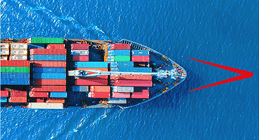Counterfeiting is set to become a $2.3trn underground economy, which could be used to fund crime and terrorism, according to one counterfeit goods investigator.
Fake trainers on the streets of Paris, fake cigarettes in West Africa and pirate music CDs in the USA have all funded trips to training camps and bought weapons and ammunition, or the ingredients for explosives.
Alastair Gray, counterfeit investigator, says many consumers believe that counterfeiting is a victimless crime, and that many of the biggest brands are able to afford to lose this revenue.
“Consumers believe just that, that the buying and selling of fakes is not that big a deal. But I am here to tell you that this is just not true. What the tourist on holiday does not see about those handbags is that they may well have been stitched together by a child that was trafficked away from her family. And what the car repair shop owner doesn’t realise about those fake brake pads is that they may well be lining the pockets of an organised crime gang involved in drugs and prostitution.”
Terrorists are selling fakes to fund attacks, says Gray, and the proceeds from the sale of counterfeit goods have been used to buy arms to attack civilians in the past.
Large networks
The range of goods investigated over his 10-year career includes fake car parts, alloy wheels, fake pet grooming tools, fake bicycle parts and, most popular, fake luxury leather goods, clothing and shoes.
Faulty fake car parts sold at automotive trade fairs were estimated to cause more than 36,000 fatalities due to consequent accidents.
“What I’ve learned is that when you scratch the surface, you find that they are rotten to the core, as are the people and organisations that are making money from them. Because they are profiting on a massive, massive scale.”
Gray adds that whereas street drugs have a profit margin of 100%-200%, selling counterfeit goods online have a profit margin of 2000%, without any of the risk. The money goes to fund crime and make organised crime gangs (OCGs) look more legitimate.
A large raid last year on five warehouses in Turkey saw 2 million counterfeit products seized, requiring 16 trucks to impound the goods.
The gang had created its own fashion brands with their own trademarks, complete with photo shoots on a yacht in Italy.
The OCGs would ship container loads of fakes to shell companies that they had set up across Europe. Documents found during those raids showed falsified shipping documents, and one bank account with nearly €3m, laundered out of Spain in under two years.
Two days after the raid, the gang was trying to bribe a law firm to get its stock back.
Terrorist atrocity links
In 2014 two of the Charlie Hebdo magazine terrorist attackers counterfeited trainers to raise money for the assault in which 12 people died and 11 were wounded. Because they had moved from extremist activity into counterfeiting, French police had downgraded their activity and had stopped observing them before the attack.
Pirate music CD sales were used to fund the 2004 Madrid commuter train bombing in which 191 people died. And in 2002, an Al Qaeda training manual explicitly outlined selling fakes as a good way of supporting terror cells.
How to spot a fake
To cripple the terrorist networks, the public need to reduce demand for counterfeit goods, which can be helped by getting better at spotting their online shops. Gray suggests four ways to spot a counterfeiter’s online shop:
- Be suspicious of non-related URLs, eg, medical-insurance-bankruptcy.com, which was being used to sell sunglasses. Gangs will register expired web addresses to capture their Google ranking.
- Be wary of 100% genuine claims, but with massive reductions in price. Words like ‘100% genuine’, ‘master copy’, ‘over-runs’ and ‘straight from factory’ are all key indicators of counterfeiting.
- If you get to the checkout page and there is no https: or padlock symbol in the address bar, then it is not a secure connection; your data is at risk, and they are likely counterfeit goods.
- Lack of contact details, and only a generic web form to contact the seller are a key counterfeit giveaway.
Trade: clean growth and tech
Clean growth and the application of major emerging technologies to existing sectors are two key characteristics of trade in 2022. Add to these levelling up supported by foreign direct investment, and there are exciting future prospects for business and the prosperity of communities globally.




